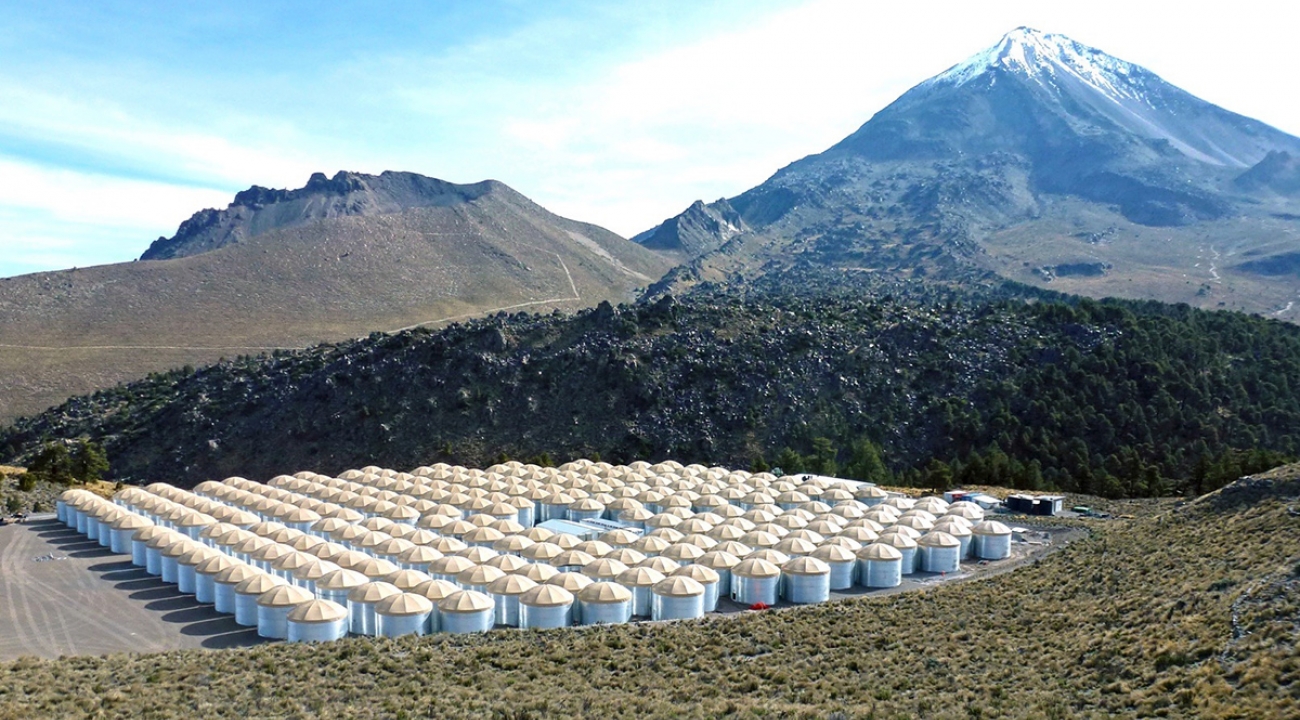
A view of the HAWC observatory in Mexico. (Credit: J. Goodman)
In our own galaxy and beyond, violent collisions fling a never-ending stream of stuff at the earth, and astrophysicists are eager to learn more about the processes that produce this cosmic barrage.
Researchers from around the world have teamed up to build the High-Altitude Water Cherenkov (HAWC) gammy-ray observatory, an array of hundreds of huge water tanks on a mountain in Mexico. HAWC helps astrophysicists spot active cosmic neighborhoods by capturing the shower of particles created when high-energy packets of light smash into the earth’s atmosphere.
Jordan Goodman, HAWC’s lead investigator, and Dan Fiorino, a postdoctoral researcher at UMD, tell Chris Cesare about the details of the HAWC experiment and how it promises to fill some gaps in our understanding of the universe. To learn more about HAWC, please visit www.hawc-observatory.org. The collaboration is preparing to publish the first results of its search, and you can read about the details in an upcoming source catalog or a paper about high-energy gamma rays from the Crab Nebula.
This episode of Relatively Certain was produced by Chris Cesare, Sean Kelley and Emily Edwards and edited by Chris Cesare and Kate Delossantos, featuring music by Dave Depper, Podington Bear, Kevin MacLeod and Chris Zabriskie. Relatively Certain is a production of the Joint Quantum Institute and the University of Maryland, and you can find it on iTunes, Google Play or Soundcloud.